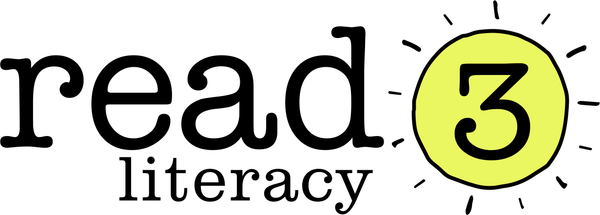What is Phonological Awareness

Phonological awareness is definitely a 'buzz word' at present. We're seeing more and more schools bringing in programs designed to build a child's 'phonological awareness', but what exactly does that mean and why is it such a big deal?
Let's break it down.
PHONOLOCIAL AWARENESS (PA) is about noticing sounds in our language.
Phonological Awareness (PA) is a blanket term. It refers to the ability to hear all levels of sound in language - individual words in sentences, syllables in words, right down to the individual sounds (phonemes) in a word.
Phonological awareness follows a developmental progression. A child needs to learn to identify:
- words in sentences
- syllables in words (e.g. car-pet)
- rhyming words (rhyming stories and nursery rhymes are great for this)
- starting sounds (e.g. m-an, m-ap, m-um)
- last sounds (e.g. ma-n, cu-p, pi-t, so-ck)
- individual sounds (phonemes) in syllables (e.g. l-e-g, s-t-a-n-d)

When you see the progression written out like this you can start to understand why having well established phonological awareness is so important. It's the way little kids eventually work out what individual sounds are in words. Once they can hear those they can match them to letters and they are on their way to being literate!
It is important to understand that when it comes to strong phonological awareness there are no short cuts. Just teaching children to hear individual sounds in words doesn't mean they understand how the English language works, especially when it comes to bigger words. They need to be able to hear rhymes and separate syllables in words if they are going to learn to read and spell efficiently.
Your child may be able to tell you the sound for each letter, or break a word like 'cat' up into sounds (c-a-t), but that doesn't mean they can HEAR that 'cat' rhymes with 'rat', 'bat' and 'brat' or that 'cat' is one of the syllables in 'caterpillar' (cat-er-pill-ar). If they can HEAR the natural patterns in our language it will help them work out visual spelling patterns that go with those sounds which will help them read and spell more efficiently. Try sounding out c-a-t-e-r-p-i-l-l-a-r letter-by-letter and you will see how slow and inefficient it is.
Having a rock solid understanding of all levels of sound in our language (not just individual phonemes) is the best foundation for successful reading (and spelling).
As much as reading and spelling looks to be about letters, sound and words, it's important to understand that hearing sound patterns and sounds within words is critical.
At Read3, we understand the importance of building strong phonological awareness skills. Learning to hear sounds is one of the three activities in our daily routine - we refer to them as HEAR activities.
When it comes to phonological awareness, the Read3 program assumes nothing. We start right back at awareness of syllables and systematically build skills from there. We link HEAR activities to the written patterns being taught (SEE activities) and then automate skills (AUTO activities) to build fluency.
If you're keen to know more, email us or give us a call.
Happy listening everyone!
